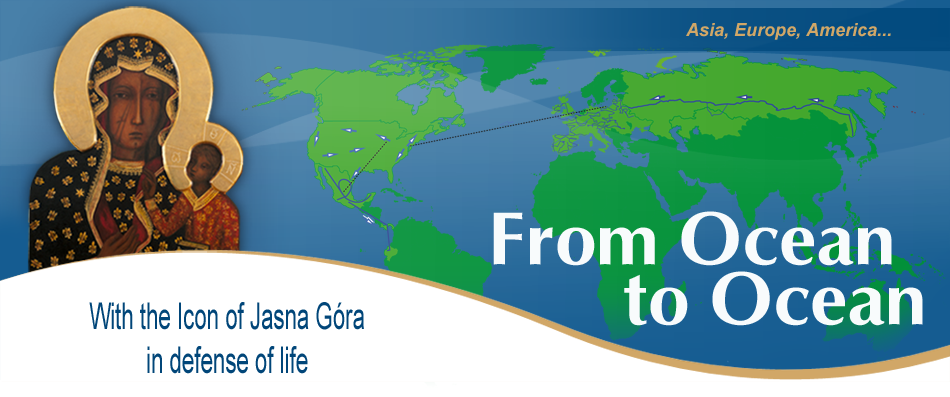In the evening of the 1st of March Our Lady of Czestochowa arrived in the city of Badajoz. It is famous for a dramatic siege in April 1812 during the Napoleonic wars. This battle was one of the bloodiest confrontations and ended with the capture of the city and the slaughter of the civilian population.
With the police escort the Czestochowa Icon came to the famous chapel of Ermita de la Soledad (the Virgin in Mourning), the patroness of Badajoz. Around 700 people were waiting in front of the chapel.
The Members of the Holy Week Brotherhood, who traditionally carry statues in processions, solemnly carried the Icon to the chapel. Throughout the night the vigil and adoration of the Most Blessed Sacrament was held.
In the morning on the following day, March 2nd , at 10 AM, the Czestochowa Icon was carried in a solemn procession through the streets of Badajoz. Many flags and standards of various brotherhoods took part in it. The military orchestra of the 16th Regiment of Castilia dressed in historic 18th century costumes was playing. The procession went along the streets of the old town past the cathedral to the church of St. Augustine. There they held a typically Spanish ceremony “the presentation of flowers”. The flowers people bring are placed at a statue (in this case at the Icon) in a specific way to create beautiful decorations. There are usually very many flowers indeed.
At 12.30 PM the solemn Holy Mass was celebrated, and later the people were encouraged to sign the European initiative „One of Us”, whose aim is to prohibit using European funds to pay for abortion and for using human embryos conceived in in vitro procedures.
The representatives of the World Fatima Apostolate and prolife movements from Portugal came to Badajoz and after the celebrations and symbolic farewell to the Mother of God, took the Icon and headed for the Portuguese border.






